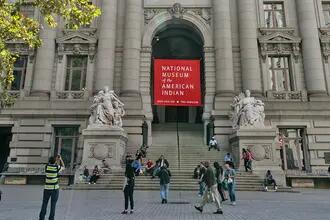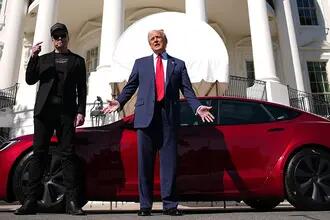
Professor Farrokh Langdana says we all need to stop obsessing about what the Fed will or will not do.
Ignore the Fed! Interest rate changes are largely irrelevant
Professor Langdana explains why short-term interest rate moves have no effect on the economy any more
By Farrokh Langdana, Director, Executive MBA Program & Professor of Finance and Economics
Faculty Blog: http://www.business.rutgers.edu/faculty/farrokh-langdana
Follow Prof. Langdana on Twitter: @FSCwithFarrokh (Fireside Chats with Farrokh)
We all need to stop obsessing on what the Fed will or will not do. It simply does not matter anymore; in fact, the Fed has been impotent for the last decade or so.
Here is why:
- The Fed can only—ONLY—change very short term (overnight) interest rates, known as the Federal Funds Rates. Real capital growth and real economic activity, on the contrary, are driven by long term interest rates which are functions of expected future inflation, and are endogenously determined. (The Fisher Effect links long term nominal interest rates to expected inflation.)
- Furthermore, economic activity—capital investment—is given by: I = I –fi where I is capital investment (housing is included here), I is investor confidence, i are long term interest rates, and f is the sensitivity (elasticity) of capital investment (I) to interest rates. The main point here is that I (investor confidence) is the main determinant of capital investment. Even when interest rates were low during the Subprime Crisis here in the US from 2007 to 2015, and earlier in Japan, with I (investor confidence) low, the Liquidity Trap prevailed. Capital investment (I) remained dead in the water in spite of the low (almost zero %) interest rates. Bottom line: It is investor confidence that matters, interest rates by themselves do nothing.
- In a world of super-mobile global capital, small interest rate changes are quickly arbitraged away as massive amounts of capital quickly slosh in and out of safe-haven countries such as the US. A small increase in US rates, for example, would attract massive capital inflow, quickly negating the interest rate gradient, and vice versa.

"The ongoing fuss and hysteria regarding what the Fed will or will not do, and will Jay Powell get fired, and will Trump get to lower interest rates, and on and on...doesn't matter," writes professor Langdana.
- Conventional macro texts link the Fed’s Open Market Operations with a quick response in real economic activity; there was an era in which Keynesian macroeconomists could jump-start and soft-land economies with great impunity. Well, all that is gone—long gone. Very simply, to recap, in the Keynesian era, a proposed decrease in short-term interest rates would prompt the Fed to buy existing government bonds and credit the banks’ reserves at the Fed by the amount of the purchase. By virtue of the Reserve Ratio, the banks’ lending ability would increase and this increased liquidity would ripple through the economy, thereby jump starting growth. The problem now is that banks have been “parking” much more at the Fed than they are supposed to—in fact many times what their reserves at the Fed ought to be. Consequently, when these highly padded reserves change due to Open Market Operations, there is no resulting change in the actual liquidity generated in the economy. Back in the Keynesian era, adding a gallon of water into a pond would cause quite a wave. Now adding a gallon of water into a giant lake will not even cause a ripple.
- Our very own Rutgers grad, Milton Friedman, warned us in the Sixties (see his 1968 seminal “Role of Monetary Policy”) that the Fed could not consistently target real economic activity or even interest rates consistently over time, and should not even bother to try. Monetary policy was not a long term solution to managing economic activity.
- Finally, we end with Shakespeare. Macbeth comes to mind. In one scene, Macbeth describes Life as a “tale told by an idiot, full of sound and fury, signifying nothing.” The ongoing fuss and hysteria regarding what the Fed will or will not do, and will Jay Powell get fired, and will Trump get to lower interest rates, and on and on, reminds me of Macbeth. Monetary Policy today is a tale full of sound and fury. Signifying nothing. Everyone stand down. Short term Interest rates do not matter. The glory days of the Fed are over.
Press: For all media inquiries see our Media Kit


